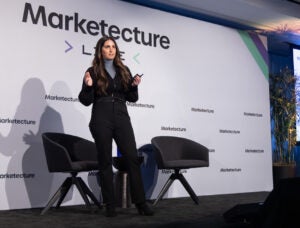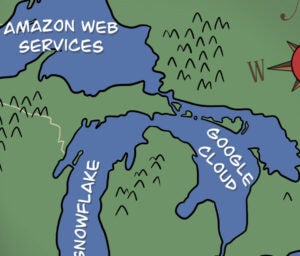 Six months after it came to light that AppNexus has a problem with invalid inventory, the New York-based company is imposing more transparency on ad networks and websites that use its platform to sell media.
Six months after it came to light that AppNexus has a problem with invalid inventory, the New York-based company is imposing more transparency on ad networks and websites that use its platform to sell media.
AppNexus confirmed to AdExchanger that it has started inserting a new snippet of JavaScript into its ad tag in order to detect the URL of the underlying page serving an impression, and to expose that URL to buyers and sellers.
The move is significant because misrepresented domains on AppNexus have become a big point of entry for low-quality, nonhuman or otherwise undesirable ad space in the company’s auction-based marketplace. And because AppNexus represents such a large percentage of transactions for the programmatic market as a whole, that obfuscation has a big negative impact. Sources estimate that 30% to 40% of the total impression volume flowing through AppNexus can’t be verified. (Update: AppNexus disputes this figure.)
Joe Apprendi, CEO of ad platform Collective, called the move “a huge step forward for AppNexus to better manage its own supply.”
Domain verification is something widely adopted on the buy side, through vendors like DoubleVerify, Moat or Integral Ad Science. On the sell side, it’s less common, but it was perhaps inevitable given the rising scrutiny around programmatic supply.
“AppNexus is one of the largest aggregators of supply,” Apprendi said. “Now that it’s taking proactive efforts to qualify its supply partners versus just taking their word for it, it’s going to help everybody be more efficient with the technology.”
With less low-quality inventory to screen out, he continued, “It’s a positive for ad decisioning. We can say ‘yes’ more often, rather than ‘no.'”
But while important, the gesture is not a cure-all – nor is it the end game for AppNexus’s inventory quality controls. That’s because there are instances where the new ad tag will not be able to ID a domain. When a seller is using multiple nested iframes or when an ad slot is injected by a toolbar, it just won’t work.
Going forward, these unverified impressions will still show up to AppNexus sellers and buyers, but with the caveat that they have no verifiable domain. In the future, these impressions will be excluded from a planned “certified supply” program that will further devalue them in the marketplace. That program has not kicked off yet, but is slated for Q2.
The new ad tag comes one month after AppNexus rolled out a portal allowing sellers to see exactly how its detection technology is representing their inventory, according to Jason Lynn, SVP of Product for AppNexus’s PMC business unit. The portal comes with tips on how to improve transparency.
“In some cases, there are technical reasons you may not be able to see the page it’s delivering on,” Lynn said.
Some sources believe AppNexus’s push for domain transparency will create fallout for big legitimate publishers that use its platform to manage sales channel conflicts – including its largest customer, Microsoft.
As one source at a sell-side platform company put it, “If AppNexus peels back that layer, they’re not going to get the supply. If the buyer wants total transparency, they’ve got to pay for that.”
Others disagree. Chris Pirrone, GM of USA Today Sports’ digital properties, doubted major publishers would be disrupted.
“Premium publishers should understand the programmatic marketplace enough to know that full transparency drives the most premium advertisers and demand,” he said. “If you go nontransparent, then you can expect that the buyers of that inventory will also be nontransparent and pretty low quality. Very rarely do we encounter advertisers trying to programmatically buy at scale around our direct sales team.”
Why did AppNexus wait so long to start exposing domains?
An AppNexus spokesperson says the company has always planned to wait until Q2 to press ahead with its anti-fraud and other quality measures. Back in November 2014, CEO Brian O’Kelley said the company will stop charging buyers or paying sellers for supply that’s deemed nonhuman or nonviewable by two vendors, DoubleVerify and Integral Ad Science.
The timing also dovetails nicely with two other new financial realities for AppNexus: its new accountability to part-owner WPP Group and its presumed IPO plans.
The first is its equity arrangement with WPP Group, which took a roughly 15% position in the company in September 2014. WPP, as both a shareholder and a major buy-side customer through its Xaxis trading desk, clearly benefits from the greater transparency created with AppNexus’s new, tougher stance on concealed domains.
The other event hasn’t happened yet. AppNexus is rumored to be actively preparing for a public offering, scheduled for later this year or early in 2016, that could value the company well in excess of $1 billion. (Its current private market valuation is approximately $1.1 billion.) To be ready for the harsh spotlight of regulatory disclosures, the company has to keep a clean nose.













